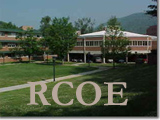Informal Reading Inventories/Case Studies
Artifact Three: Lesson Plans/Action Research
This artifact includes two lesson plans that I designed and taught to a small group of Kindergarten students in a resource classroom. After teaching the lessons I reflected on the students' responses and evaluated the work that I had them complete. As part of the reflection process, I wrote how I would change instruction and what types of lessons the students would benefit from based on their responses. I also included what types of reading strategies these lessons focused on and what skills were being introduced to the students.
Chicka, Chicka Boom Boom Lesson Plans Chicka, Chicka Boom Boom Project
Hey Diddle, Diddle Lesson Plans Hey Diddle, Diddle Project
Context:
I designed these lesson plans as part of my RE 5100 Teaching Beginning Readers and Writers course. In this course we were able to choose the grade level to focus on and the reading strategies we wanted to incorporate into our lessons. I chose to design lessons for Kindergarten students because this is an age level I had not had much experience with. I also wanted to use some strategies I had learned in the course to teach these lessons.
One lesson focused on using a nursery rhyme repeatedly to familiarize students with print. It also gave the students an opportunity to observe beginning sounds and made connections with the sounds heard in the nursery rhyme to sounds around them. The other lesson focused first on reviewing the alphabet. The students had to use their alphabet knowledge to recall the letters heard in a story and make the sound of that letter. The lesson also providing an opportunity for students to practice fluency skills, learn stories having a beginning, middle, and end, and summarize what they learned by answering questions.
Through this project I learned how to differentiate instruction based on the response of students. Throughout the lessons I had to change my instruction based on the response I was receiving from the children. I also learned that various teaching methods benefits students and individualizes instruction. By reflecting on these lessons I demonstrated my ability to analyze student response in order to plan instruction. I also incorporated my knowledge of various reading skills and strategies I used to teach these skills.
Alignment to Standards:
Standard A. Instructional Expertise
The candidate demonstrates instructional expertise by applying the theoretical, philosophical, and research bases for educational practice in P-12 settings to improve student learning.
This artifact demonstrates my knowledge of the reading process by application of the theoretical, philosophical, and research bases to improve student learning. The lessons demonstrate my ability to plan and implement well-balanced lessons based on my teaching beliefs to improve student learning. They also show my ability to reflect on my teaching practices in order to differentiate and plan instruction.
Standard B. Knowledge of Learners
The candidate incorporates knowledge of the nature of the learner, learning processes, variations in learning abilities and learning styles, and strategies for evaluating learning into the planning, delivery, and evaluation of instruction.
This artifact shows that I can differentiate instruction, coordinate, and plan a classroom to meet the needs of all students. Each child works through different stages that require strategies to address his or her differences. These lessons demonstrate my knowledge of literacy and how to plan lessons based on differences among learners at various stages of reading.
Student
